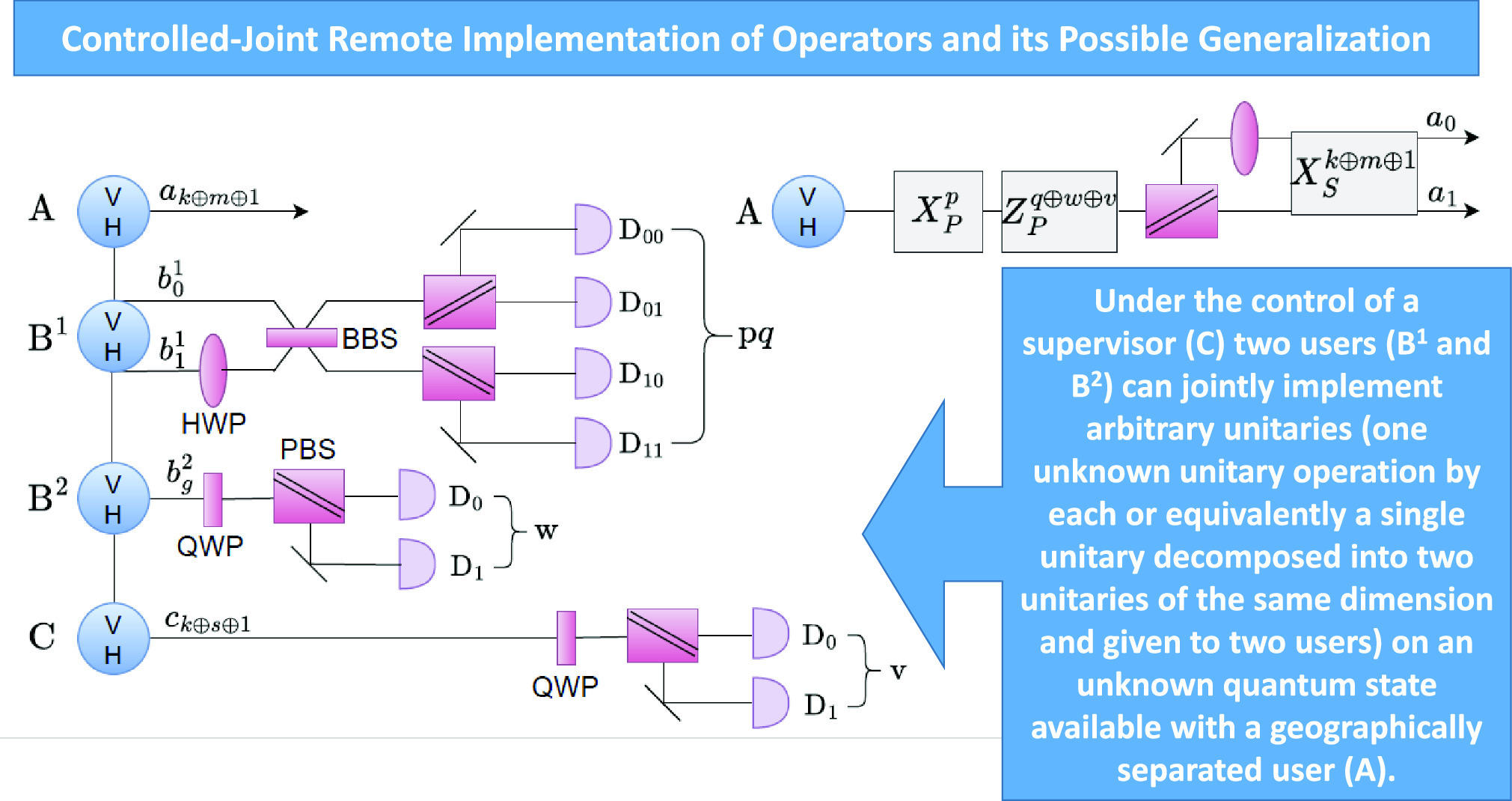https://doi.org/10.1140/epjd/s10053-024-00883-x
Regular Article - Quantum Information
Controlled-joint remote implementation of operators and its possible generalization
1
Jaypee Institute of Information Technology, A 10, Sector 62, 201309, Noida, UP, India
2
Thang Long Institute of Mathematics and Applied Sciences, Thang Long University, Nghiem Xuan Yem, Hoang Mai, Hanoi, Vietnam
3
Center for Theoretical Physics, Institute of Physics, Vietnam Academy of Science and Technology, 18 Hoang Quoc Viet, Cau Giay, Hanoi, Vietnam
Received:
15
March
2024
Accepted:
16
June
2024
Published online:
6
July
2024
The existing notion of the shared entangled state-assisted remote preparation of unitary operator (equivalently the existing notion of quantum remote control) using local operation and classical communication is generalized to a scenario where under the control of a supervisor two users can jointly implement arbitrary unitaries (one unknown unitary operation by each or equivalently a single unitary decomposed into two unitaries of the same dimension and given to two users) on an unknown quantum state available with a geographically separated user. It is explicitly shown that the task can be performed using a four-qubit hyperentangled state, which is entangled simultaneously in both spatial and polarization degrees of freedom of photons. The proposed protocol which can be viewed as primitive for distributed photonic quantum computing is further generalized to the case that drops the restrictions on the number of controllers and the number of parties performing unitaries and allows both the numbers to be arbitrary. It is also shown that all the existing variants of quantum remote control schemes can be obtained as special cases of the present scheme.
Copyright comment Springer Nature or its licensor (e.g. a society or other partner) holds exclusive rights to this article under a publishing agreement with the author(s) or other rightsholder(s); author self-archiving of the accepted manuscript version of this article is solely governed by the terms of such publishing agreement and applicable law.
© The Author(s), under exclusive licence to EDP Sciences, SIF and Springer-Verlag GmbH Germany, part of Springer Nature 2024. Springer Nature or its licensor (e.g. a society or other partner) holds exclusive rights to this article under a publishing agreement with the author(s) or other rightsholder(s); author self-archiving of the accepted manuscript version of this article is solely governed by the terms of such publishing agreement and applicable law.





